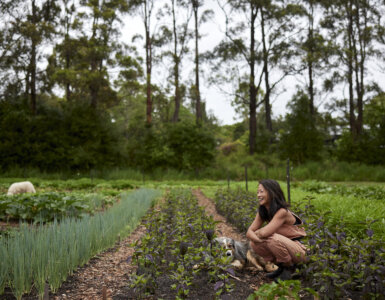We’re living in a market where so-called disruptive foods have flooded supermarket shelves in recent years. Think plant-based meats, insect protein bars, synthetic fat replacers and precision fermented milk proteins.
A new report by agribusiness banking specialist Rabobank suggests the hype might be over. So, where to next with food innovation? It’s a fascinating topic and to learn more Rabobank’s Senior Consumer Foods Analyst Tom Bailey has some insights.
Investors looking for next big thing
Tom says disrupting the food industry is not necessarily a new phenomenon. Indeed, innovations like refrigeration, pasteurisation and canning all changed the way consumers shopped and ate. In recent years though, there has been a frenzy of investors looking to make money on the next big thing.
“What they are is basically products and technologies that change the fundamental operations of the market. The horse and buggy were disrupted by the car, for example.”
The environment has, up until now, been perfect for growth in this area due to low interest rates attracting investors, the foodie culture, millennials willing to spend on new products and the climate change discussion around carbon emissions.
“You kind of have the perfect storm for investors to go all-in in disruptive technologies. But they bit off more than they could chew,” says Tom.
New report findings
In a new report by Rabobank titled Disruptive Foods Prove to be More Hype than Bite, Tom says all the factors that were in favour of a disruptive market have now inverted.
Interest rates rising, returns falling, the geo-political environment with uncertainly around supply chains, sourcing products and volatility of pricing are all issues. Perhaps the most noteworthy factor though, is success, or lack thereof.
“When you look at brands that really came in and disrupted what we actually eat, there’s really very few. I think the plant-based milk space may be the only one where we have some good examples. But the majority just didn’t perform.”
Tom adds, despite all the external factors – taste is still king.
“What tasted good? What did you want to repeat purchase, eat again and share with your family? Not many. They really prioritised the wrong attributes.”
After taste, people might then look at convenience, health, price and then sustainability last, Tom argues.
So, where to next?
Tom thinks instead of major upsets, it’ll go back to tried and true incremental innovation, or a re-jigging of existing products. Tom’s examples include – little Skittles, wraps at fast-food outlets like Burger King, ethnic flavouring, sustainable packaging changes, “shrinkflation”, partnerships and collaborations.
“Essentially, it’s back to basics. It’s small, effective changes to food products that customers know, trust and love.”
If Tom was betting on the next big thing, he says investors need to choose who to target. Is it the premium cashed-up consumer at the top end or the masses in the middle? He says nostalgic foods that bring security and comfort will be a space to watch. Also, products borne from regenerative farming – an area in which Australia is already taking the lead.
Food for thought.
Hear more stories like this by subscribing to the Telling Our Story podcast on iTunes (or wherever you listen to podcasts) and follow podcast host Angie Asimus on Instagram for more updates.







































Add comment